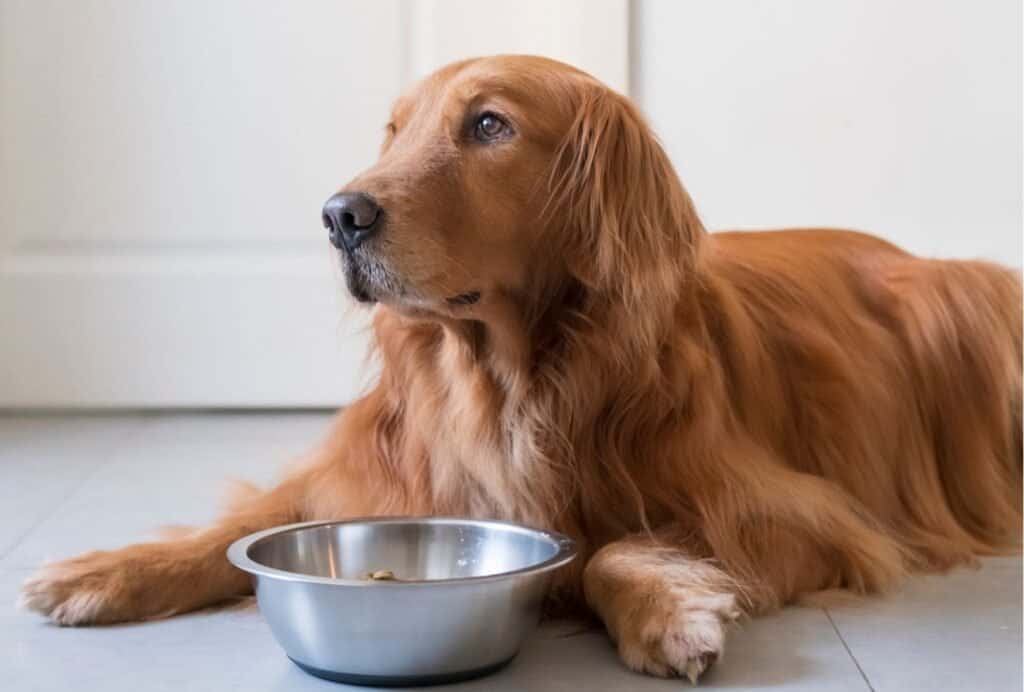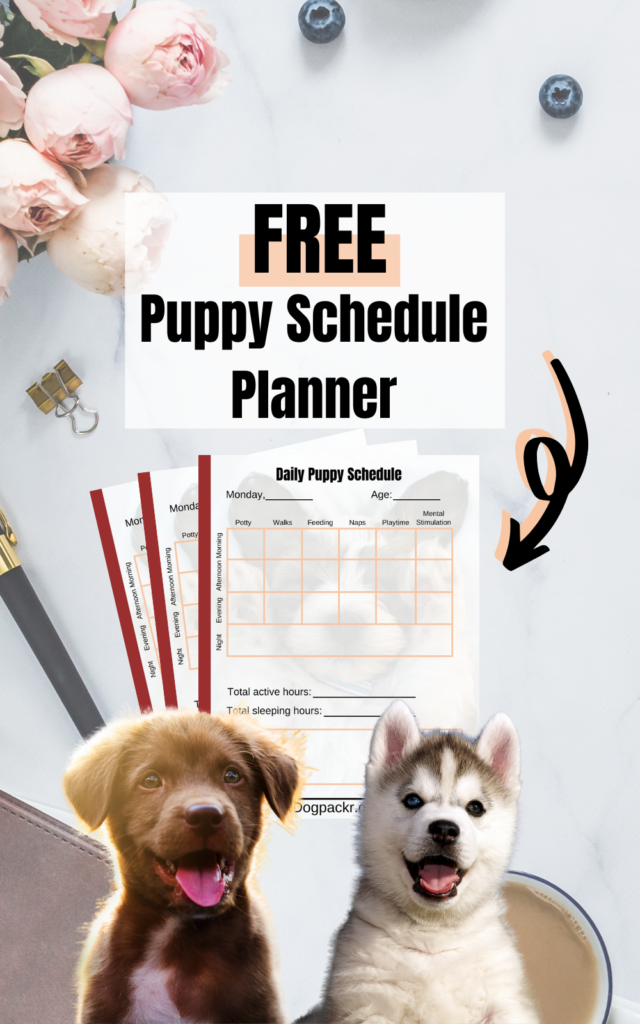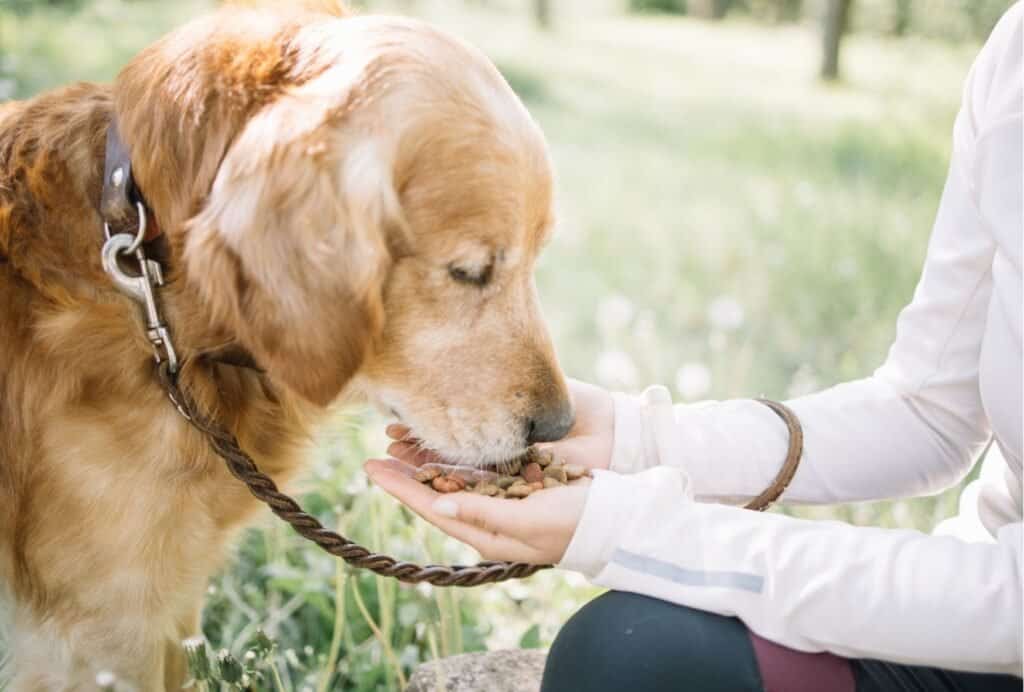If your dog shows signs of aggression around his food, you’re probably wondering how to stop your dog guarding food.
That’s actually a really common issues. Lots of dogs not only guard food, but also toys or people or whatever else they value.
Unfortunately, guarding isn’t a kind of behavior you want to ignore. Without training, it can get dangerous pretty quickly.
So, here’s how to stop your dog guarding food. But as always, let’s start with the “why”.
Table of Contents
Why is my dog guarding food?
Is your dog a little sweetheart—until there’s food involved? Maybe as soon as he gets his favorite chewy or his next meal he growls whenever you or anyone else gets close?
What’s going on with that?
When dogs get super protective of items or people, that’s called “guarding”. Your dog is trying to keep whatever he’s guarding safe from some kind of perceived harm.
Guarding can be really frustrating behavior. It can also end up being dangerous if you don’t find ways to manage it. A dog that’s guarding might become reactive or aggressive if he’s approached.
Before we talk a little more about why dogs guard, take a look at these other common issues:
- My Dog Growls When Tired—What Can I Do?
- 7 Tips for Overtired Puppy Aggression
- 6 Signs of an Aggressive Puppy and How to Stop It
It’s instinctive behavior
The main reason why your dog might be guarding food is because that’s what his ancestors would have done.
Your dog’s ancestors didn’t have humans to take care of them and make sure that they had enough to eat. Instead, it was up to your dog and the rest of the pack to make sure they were fed.
And, unfortunately, there wasn’t always enough to go around!
That means that your dog’s ancestors had to guard what food they found to make sure that they’d be able to eat. They needed to keep food and other resources safe from other dogs and animals.
Even though your dog doesn’t need to do that anymore, the instinct is still there. Old habits die hard, after all!
He never learned that he gets enough food
This is an especially common issue with rescue dogs.
If you adopted your dog from a rescue or shelter, then you’re probably aware that rescue dogs tend to have a few problems. One common one is resource guarding.
In your dog’s life before he met you, he may never have been able to get enough food. Now, he still thinks he needs to protect what he has. He may also constantly beg for more food.
But this can also be an issue if you got your puppy from a breeder. Your puppy may have had to compete with the other puppies in his litter for food. And that behavior may have stuck with him throughout his life.
How to stop your dog guarding food
Guarding isn’t just somewhat annoying behavior. It also has the potential to be dangerous. If your dog is guarding food and someone approaches, they could get hurt.
It can be especially dangerous around kids, since kids may not understand that they shouldn’t approach a dog if they’re guarding.
Here are a few steps you should follow to teach your dog not to guard anymore.
Remember to be slow and patient and go at your dog’s pace. Don’t put yourself or your dog in danger. If his guarding behavior is particularly bad, then you might want to reach out to a professional trainer.
Teach him the “leave it” command
One of the most useful commands you can teach your dog is “leave it.” This command will serve you well in a variety of situations—including ones like these!
If you haven’t already taught your dog “leave it,” now is the time to get started. Remember to keep practicing and make sure that both you and your dog have a good handle on it.
Once your dog has a good grasp on the command, you can use it to send your dog away if he’s guarding his food.
Teach him that your hand close to his food bowl is a good sign
Your dog is guarding, which means that he thinks anything coming close to his bowl is a danger. When he sees your hand approaching, he might think that you’re trying to take his food away from him.
It’s your job to teach him that your hand getting close to his food bowl is a good thing! You can do this with tasty treats while he’s eating. Grab some of his favorites. The higher the value, the better for this sort of training.
Make sure you start slowly. Instead of approaching right away, just stand nearby. Once your dog is able to relax while you’re close, start coming to him with a treat and toss a treat near him. Once your dog is relaxed enough with you approaching, you can move on to the next step.
You might also want to check out my article with more tips for training your dog at home!
Bend down and place a yummy treat next to the food bowl when he’s eating
If tossing a treat is going well and your dog is staying relaxed and not guarding his food, then you can try advancing a little further.
Instead of just tossing the treat at your dog, try placing it down next to his food bowl.
As soon as you’ve put the treat down, you should calmly stand up and move away. If your dog starts growling or showing any signs of reactivity, it’s time to peel back. Remember, your number one priority should be making sure that both you and your dog are safe.
If your dog is staying calm and allowing you to bend down and put the treat by his bowl, you can try the next tip.
When possible, put the treat into his bowl when he’s eating
The best way to teach your dog that your hand around his bowl is a good thing is to touch the bowl. But remember, you should only do this if your dog isn’t showing any signs of aggression or reactivity.
If your dog seems okay with you being physically close to his bowl, then you might want to try putting the treat with the rest of his food. If you feel safe and comfortable enough, then put the treat in his bowl while he’s eating.
If your dog doesn’t react well to you putting the treat in his bowl, then you’ll want to go back a step or two.
Next, tell him to leave it and give him the treat, while he’s eating
If your dog is feeling comfortable enough with your hand around his bowl while he’s eating, that is a huge improvement! Now you want to make sure that he listens to you while he’s eating.
Calling your dog away from his food while he’s eating and having him respond helps ensure that you can break him out of his guarding habit.
While your dog is eating, make sure you have one of his favorite treats with you. Then, tell him to “leave it.” Once your dog turns away from his food, give him his tasty treat.
Do this consistently, a couple of times every meal, if possible. Even when your dog has stopped guarding, it’s a good idea to repeat this step every once in a while. That will make sure that your dog’s guarding habit really is done for good.
Do puppies grow out of food aggression?
It’s common for puppies to develop food aggression if they’ve had to spend a lot of time competing with their littermates for meals.
If your puppy has food aggression, then you might be wondering if he’ll grow out of it on his own.
Like most unwanted behaviors, the only way they’ll stop is with your help. Otherwise, your puppy’s food aggression might only get worse.
It’s best to start right away if your puppy shows signs of food aggression. Make sure you work with your puppy, following all the above tips to get him used to eating with you nearby.
Make sure you also take a look at these other common puppy problems new puppy owners might run into:
Why is my dog guarding his food but not eating it?
If your dog is guarding his food but he won’t eat any of it, then he might be too stressed out to eat. He’s anxious about you being nearby, and that anxiety is keeping him from eating!
If that’s the case, then work on training with your dog to get him used to you being nearby. You might also want to take him to the vet to make sure that he’s not sick.
Remember, asking for help from a dog trainer is a good idea if your dog’s guarding seems particularly concerning.
My dog is guarding food from another dog, help
Is your dog guarding, but only around other dogs?
In this case, just managing your dog’s environment will help. If you’ve got a multi-dog household and your dog only guards from other dogs, you might just need to feed him in a different area.
Feeding your dogs in their crates can also help them feel safer. Ready to learn how to crate train your dog? Here’s how to crate train a dog easily in 13 steps.
Conclusion
Guarding is a really common issue with dogs. And, unfortunately, it’s one of the most problematic. Guarding can result in reactivity or aggression if you’re not careful.
If your dog shows signs of guarding, then make sure you start working with him to curb the behavior. In extreme cases, reaching out to a professional dog trainer will make sure you and your dog are getting the help you need.
*Disclosure: This post may contain affiliate links, meaning, I get a commission if you decide to make a purchase through one of my links, at no cost to you.




